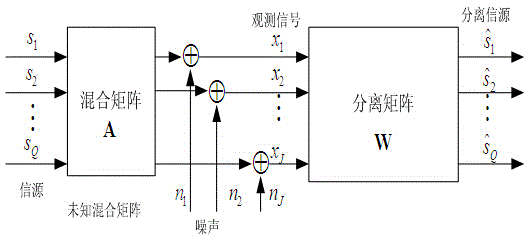Underdetermined blind identification method based on general covariance and tensor decomposition
A generalized covariance and tensor decomposition technology, which is applied in complex mathematical operations and other directions, and can solve problems such as high decomposition complexity and large dimensionality.
- Summary
- Abstract
- Description
- Claims
- Application Information
AI Technical Summary
Problems solved by technology
Method used
Image
Examples
Embodiment Construction
[0079] The present invention will be further described in detail below in conjunction with test examples and specific embodiments. However, it should not be understood that the scope of the above subject matter of the present invention is limited to the following embodiments, and all technologies realized based on the content of the present invention belong to the scope of the present invention.
[0080] An underdetermined blind identification method based on generalized covariance and tensor decomposition, including the following processing steps, the implementation process is as follows figure 1 Shown:
[0081] (1) Establish a corresponding generalized covariance matrix according to the generalized covariance of the observed mixed sampling data at multiple different processing points;
[0082] (2) according to the generalized covariance matrix in described step (1), and by the character of generalized covariance, set up kernel function equation set;
[0083] (3) stacking ...
PUM
 Login to View More
Login to View More Abstract
Description
Claims
Application Information
 Login to View More
Login to View More - R&D
- Intellectual Property
- Life Sciences
- Materials
- Tech Scout
- Unparalleled Data Quality
- Higher Quality Content
- 60% Fewer Hallucinations
Browse by: Latest US Patents, China's latest patents, Technical Efficacy Thesaurus, Application Domain, Technology Topic, Popular Technical Reports.
© 2025 PatSnap. All rights reserved.Legal|Privacy policy|Modern Slavery Act Transparency Statement|Sitemap|About US| Contact US: help@patsnap.com



